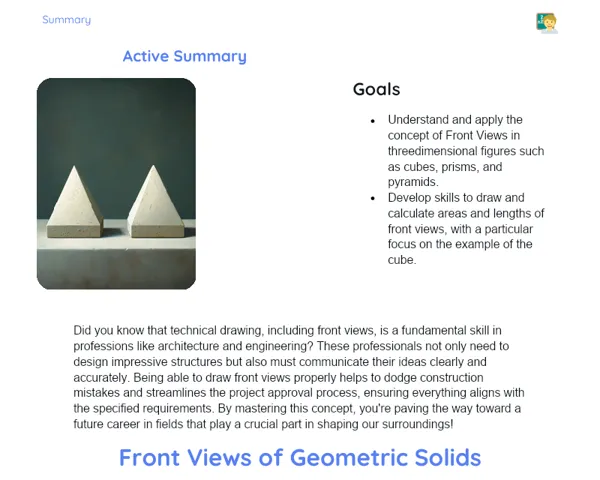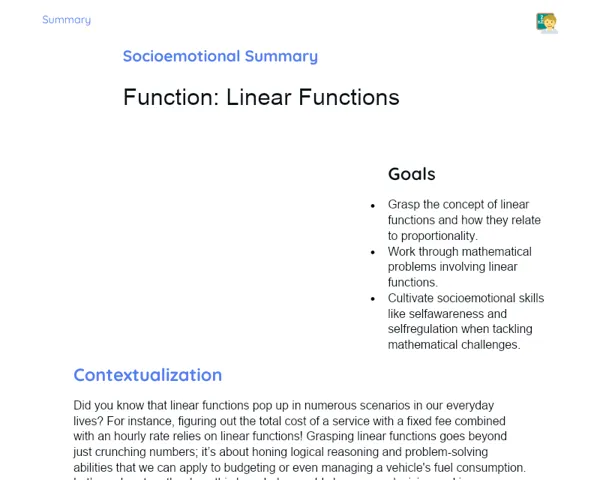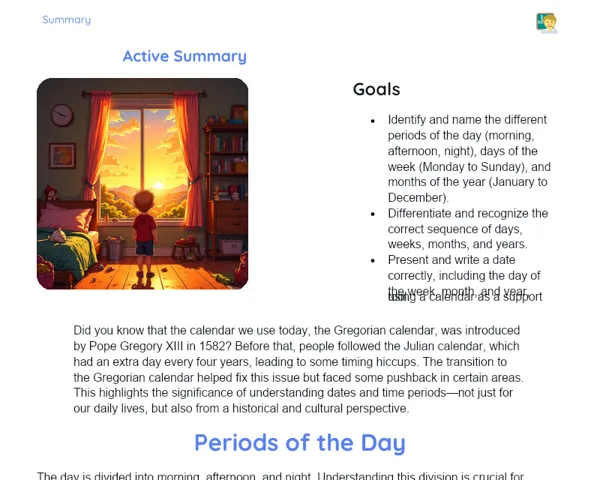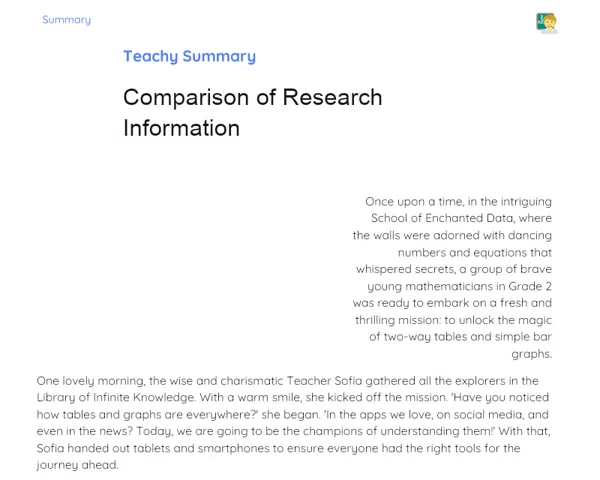Socioemotional Summary Conclusion
Goals
1. Grasp and utilize the Pythagorean Theorem to tackle problems related to right-angled triangles 🇿🇦
2. Identify and apply the metric relationship between the triangle's sides, hypotenuse, and the projection of a side onto the hypotenuse (m = b²/a) 🤓
Contextualization
Did you know that engineers and architects rely on the Pythagorean Theorem when creating incredible and safe structures? 🏗️ Just think about it – designing bridges, buildings, and even theme parks! By understanding how metric relationships function in right-angled triangles, you can elevate your skills in both mathematics and various professions! 🚀
Exercising Your Knowledge
Pythagorean Theorem
The Pythagorean Theorem is a key principle in geometry. It tells us that in a right-angled triangle, the square of the hypotenuse (the side opposite the right angle) is equal to the sum of the squares of the other two sides (the legs). This means we can determine the hypotenuse if we know the lengths of the legs, and vice versa. This theorem is the foundation for numerous calculations in geometry and is applied in various fields, from engineering to daily life.
-
Definition: In any right-angled triangle, a² = b² + c², where 'a' is the hypotenuse, and 'b' and 'c' are the legs.
-
Practical Application: Utilised by civil engineers to calculate distances and design secure structures.
-
Importance: Crucial for solving both geometric and practical issues related to distances and angles.
Metric Relationships in the Right-Angled Triangle
Metric relationships in the right-angled triangle encompass not merely the Pythagorean Theorem but also other formulas involving the sides, the hypotenuse, and the projections of the sides onto the hypotenuse. These relationships are important for calculating distances and angles accurately, thus allowing for the solution of more intricate problems.
-
Main Formula: m = b²/a, where 'a' is the hypotenuse, 'b' is a leg, and 'm' is the leg's projection onto the hypotenuse.
-
Example: If the hypotenuse measures 10 cm and a leg measures 4 cm, the leg's projection on the hypotenuse will be m = b²/a = 16/10 = 1.6 cm.
-
Applications: Vital for architects who need precision when drafting plans and architectural designs.
Practical Applications
Comprehending the metric relationships in the right-angled triangle serves not only academic purposes but also has numerous applications in the real world. Fields like engineering, architecture, and our everyday activities hinge on these relationships for calculating accurately and making informed choices.
-
Engineering: Applied to calculate distances, heights, and depths in construction and infrastructure endeavors.
-
Architecture: Assists in designing buildings, ensuring structural stability and safety.
-
Everyday Life: Useful for measuring distances and angles, practical when rearranging furniture or hanging pictures in a room.
Key Terms
-
Pythagorean Theorem: Formula establishing the relationship among the sides of a right-angled triangle.
-
Hypotenuse: The longest side of a right-angled triangle, situated opposite the right angle.
-
Legs: The two shorter sides of a right-angled triangle forming the right angle.
-
Leg's Projection: The distance from where the leg intersects with the hypotenuse to the point where the leg's perpendicular meets the hypotenuse.
-
Metric Relationships: Formulas connecting the lengths of the sides of a right-angled triangle.
For Reflection
-
How can grasping the Pythagorean Theorem assist you in addressing problems in everyday life? Provide a specific example.
-
Recall a scenario where you needed to measure a distance or take precise calculations. How did you cope emotionally with the challenge? What strategies did you employ to resolve the situation?
-
Did collaborating in a group during the problem-solving activity boost your confidence? How did teamwork and communication with your classmates influence your learning experience and feelings?
Important Conclusions
-
The Pythagorean Theorem is vital for solving right-angled triangle problems, allowing for precise calculations of the hypotenuse or legs. 🤩
-
The metric relationships in the right-angled triangle, such as the formula m = b²/a, are essential for accurately gauging distances and projections. 📏
-
This knowledge holds practical significance in fields like engineering and architecture, as well as in everyday situations. 🚧
Impacts on Society
The Pythagorean Theorem and the metric relationships in right-angled triangles profoundly affect today's society. Professionals in engineering and architecture use these concepts daily to design and construct safe and functional infrastructures, like bridges, buildings, and roads. These projects shape the urban landscape and ensure the safety and well-being of the people who occupy and use them.
Moreover, an understanding of these mathematical principles enhances students' daily lives. Knowing how to compute distances and organize spaces proves handy in scenarios like rearranging furniture or deciding where to hang a painting. This practical connection fosters a deeper emotional comprehension of the subject, making the learning experience more meaningful and relevant.
Dealing with Emotions
To navigate your feelings during the study of the Pythagorean Theorem and metric relationships, I suggest this exercise for students: Firstly, identify and record the emotions that come up when tackling a challenging geometry question, such as frustration or anxiety. Then, ponder the roots of these feelings and their effects on your performance. Label these emotions precisely, like 'frustration' or 'discouragement'. Express these feelings positively, perhaps by seeking help or taking a moment to breathe. Finally, manage these emotions through relaxation techniques, like the guided meditation we did in class, to help maintain focus and calm.
Study Tips
-
Practice different types of problems involving the Pythagorean Theorem and metric relationships. The more you practice, the more confident you’ll grow! 📖
-
Form study groups to discuss and tackle problems collectively. Working with peers can infuse freshness into your learning and ease stress. 🤝
-
Take advantage of online resources, like videos and tutorials that visually break down the applications and solutions to problems. 💻



